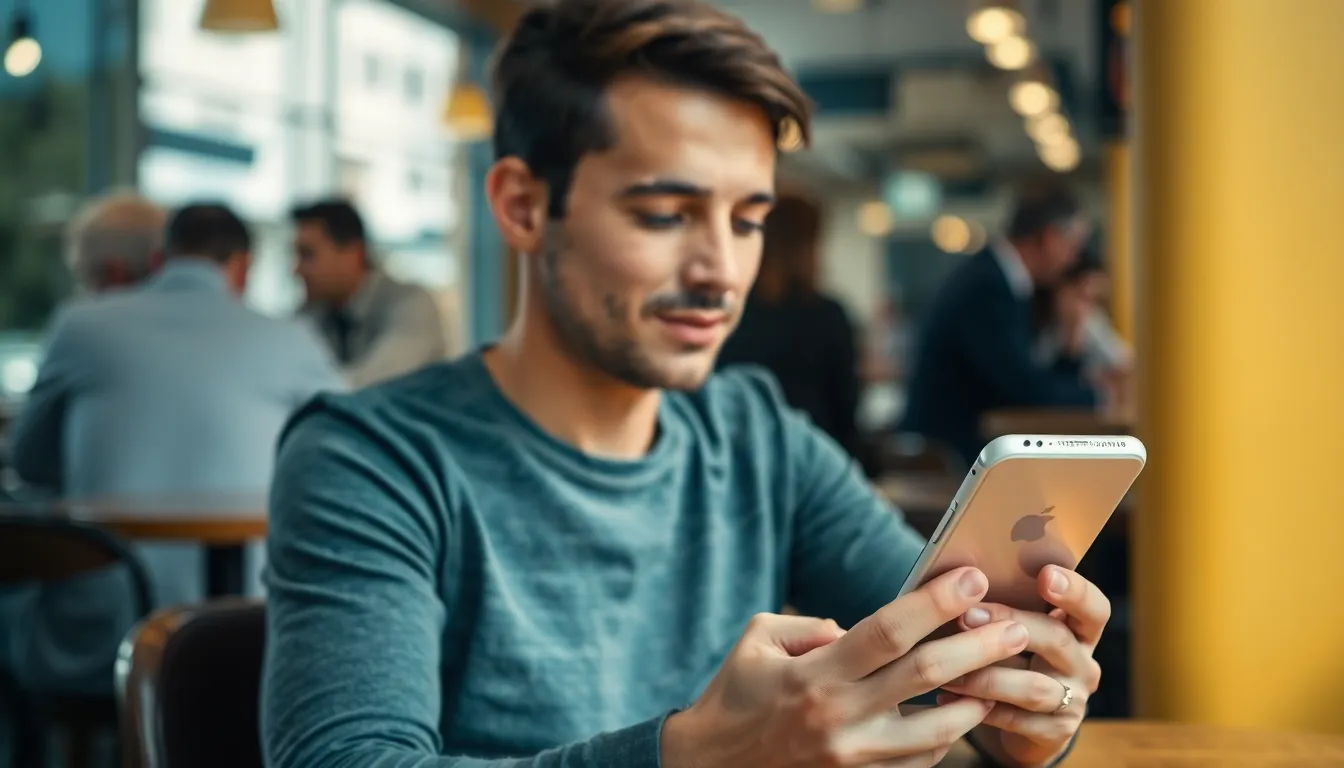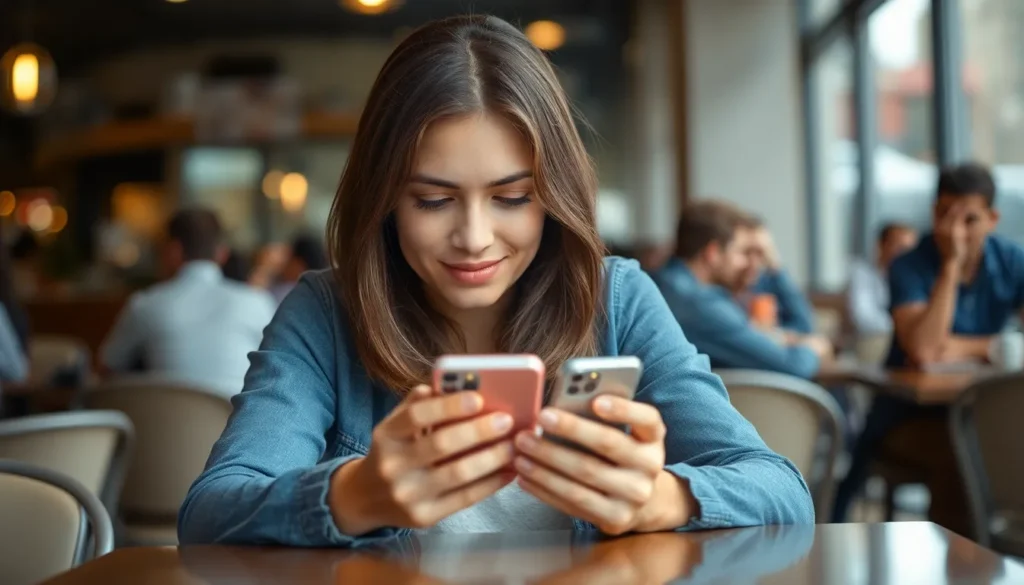Table of Contents
ToggleIn a world where prying eyes seem to be everywhere, protecting your personal space on your iPhone is more crucial than ever. Imagine this: you’re scrolling through your messages in a coffee shop, and suddenly, your nosy neighbor leans in like they’re trying to read your diary. Yikes! But fear not, there’s a way to keep your secrets safe and your screen private.
Setting up a privacy screen on your iPhone isn’t just smart; it’s a little like having a superhero cape for your phone. With a few simple steps, you can create a barrier between your precious information and the world. So grab your favorite beverage, and let’s dive into how to make your iPhone as private as a secret agent’s lair. Your personal life deserves a little discretion, don’t you think?
Understanding Privacy Screens
Privacy screens are essential for safeguarding personal information displayed on an iPhone. Users can feel vulnerable in public spaces, as onlookers might try to see sensitive data. By installing a privacy screen, individuals create a barrier that limits visibility to only the person directly in front of the device.
Multiple types of privacy screens exist, catering to varying preferences and needs. Filter-based privacy screens work by narrowing the viewing angle; those positioned at 30 degrees prevent side views while maintaining a clear display for direct users. Additionally, screen protectors can provide physical protection against scratches alongside privacy benefits.
Choosing the right privacy screen requires consideration of both size and material. Options commonly include tempered glass and flexible film, each offering distinct levels of durability and clarity. When selecting a privacy screen, compatibility with specific iPhone models is crucial to ensure proper fit.
Privacy settings on an iPhone also enhance data security. Users can enable features such as Face ID or Touch ID, securing access to the device and apps. Adjusting settings for app permissions allows individuals to manage which applications have access to personal information, providing an additional layer of protection.
Utilizing a privacy screen not only protects sensitive information but also encourages mindfulness about data security. Screen privacy extends beyond physical products; it also pertains to behavioral practices, such as being aware of one’s surroundings while using the device in public. Implementing these strategies fosters a safer digital environment.
Benefits of Using a Privacy Screen

Privacy screens provide significant advantages in maintaining personal data confidentiality. They serve as effective barriers against prying eyes in diverse environments.
Protecting Your Information
Protecting sensitive data ranks as a primary advantage of using a privacy screen. By limiting the viewing angle, only individuals directly in front of the screen can see the content, reducing the likelihood of unsolicited viewing. These screens effectively guard against identity theft and unauthorized access, especially when handling sensitive information like banking or personal messages. Users feel secure knowing their private details stay hidden from unwanted observers.
Enhancing Security in Public Spaces
Enhancing security becomes essential in crowded settings such as cafes or public transportation. In these places, distractions and curious onlookers often disrupt privacy. With a privacy screen, individuals can confidently use their iPhones without fear of being watched. It allows them to engage with apps and online banking safely, ensuring peace of mind. By prioritizing screen privacy, they reduce the risk of data breaches while enjoying their devices in public.
Step-by-Step Guide on How to Do Privacy Screen on iPhone
Setting up a privacy screen on an iPhone involves a few straightforward steps. Users can enhance their privacy through built-in features or by utilizing third-party apps.
Using Built-in Features
Built-in privacy options enhance security directly from iPhone settings. Users can activate Face ID or Touch ID for secure access to their device. Privacy settings also allow management of app permissions, helping restrict access to personal data. Screen time settings can limit what others see when they access shared devices. Each user can find these options under “Settings,” then “Privacy,” ensuring that sensitive information stays confidential.
Utilizing Third-Party Apps
Numerous third-party apps exist for added privacy on an iPhone. Apps like “Privacy Screen” provide customizable settings to obscure on-screen information from side views. Users can adjust viewing angles in accordance with their needs, making it difficult for others to see. Each app often features a dimming effect or pixelation to further protect visibility. Installing these apps from the App Store enhances user control over privacy while using the phone in public spaces.
Tips for Effective Privacy Management
Ensuring effective privacy management on an iPhone requires proactive steps. Users can enhance their security by following essential practices.
Regularly Update Your iPhone
Keeping the iPhone updated protects against security vulnerabilities. Regular updates often contain security patches that defend against threats. Checking for updates regularly ensures access to the latest features and improvements. Users should navigate to Settings, then General, and select Software Update to verify if an update is available. Installing updates promptly minimizes the chances of exposure to security risks. Frequent updates contribute to a more secure device, ultimately shielding personal information.
Be Cautious with Public Wi-Fi
Using public Wi-Fi networks exposes users to potential privacy risks. These networks often lack security measures, making data interception easier for cybercriminals. Connecting to secure websites with HTTPS offers an additional layer of encryption. Users should consider using a VPN to create a secure connection when accessing sensitive information. Avoiding financial transactions on public networks further reduces the risk of data theft. Staying aware of network security can significantly safeguard personal data while using an iPhone in public.
Taking steps to enhance privacy on an iPhone is crucial in today’s digital landscape. By utilizing privacy screens and built-in security features, users can significantly reduce the risk of unauthorized viewing. It’s not just about physical barriers; adopting mindful practices around data security is equally important.
Regular updates and secure connections further bolster protection against potential threats. With these strategies in place, users can confidently navigate public spaces, knowing their personal information remains secure. Embracing these privacy measures allows for a more secure and enjoyable iPhone experience.







